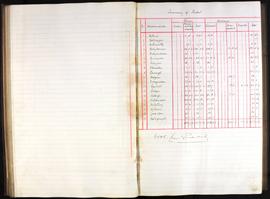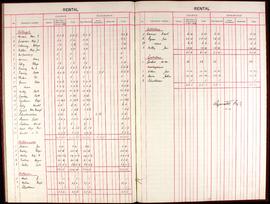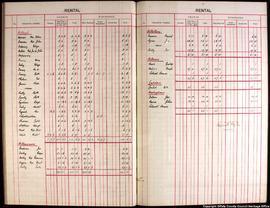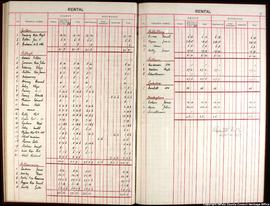- IE OCCHO DIGBY/C/9
- Stuk
- 1881
Part of Digby Irish Estates
Annual report, accounts and rental for year ending June 1881. Reports that the financial condition of the estate had disimproved, outstanding arrears remaining due and abandoned arrears considerably increased. Profit remitted was £8500, a decrease on previous years, although there was a net increase in the overall rental income. Also reports that the Roskeen lease was surrendered by the reps of Mr. Bailey, and that the farm at Ballydownan was surrendered by Mr Adams and now in Lord Digby's hands and set for grazing with newly purchased cattle.
In terms of land improvement, Digby reports on the completion of a number of Board of Works projects including the draining and squaring of the moors under Scrubb Wood, the deepening of the boundary stream at Cappancur and the sinking of a large main drain in Balinvally bog. Construction works included new offices for Mr Arthur of Killurin and Patrick Nugent of Ballycollin; new cottages completed at Killeigh; new cottage commenced in Geashill Village and assistance give to William Mathews to erect substantial new dwelling house in Killurin. Also reports on the thinning and replanting of Derrygunnigan Wood.
Warns that agrarian agitation is increasing encouraged by the Land League. Blames the Government for slow response to agitation. Reports on a 'monster meeting' held in Tullamore by the Land League prior to the winter collection of rents (1880) where the Geashill tenantry requested en masse Griffith's Valuation as a fair rent which was subsequently refused by Lord Digby, but who abated the rent by 10% on the half year's rent payable. Identifies William Adams as the leader of the agitation and describes the court proceedings taken against him individually. With the result of being faced with bankruptcy, Adams paid his rent and then surrendered farm at Ballydownan, with the result that all other agitation on the estate ceased and rents were collected within three weeks. Also refers to 'boycotting' occurring throughout the estate but that no acts of violence or outrages took place. A further attempt at withholding rent in May 1881 was similarly short-lived.




